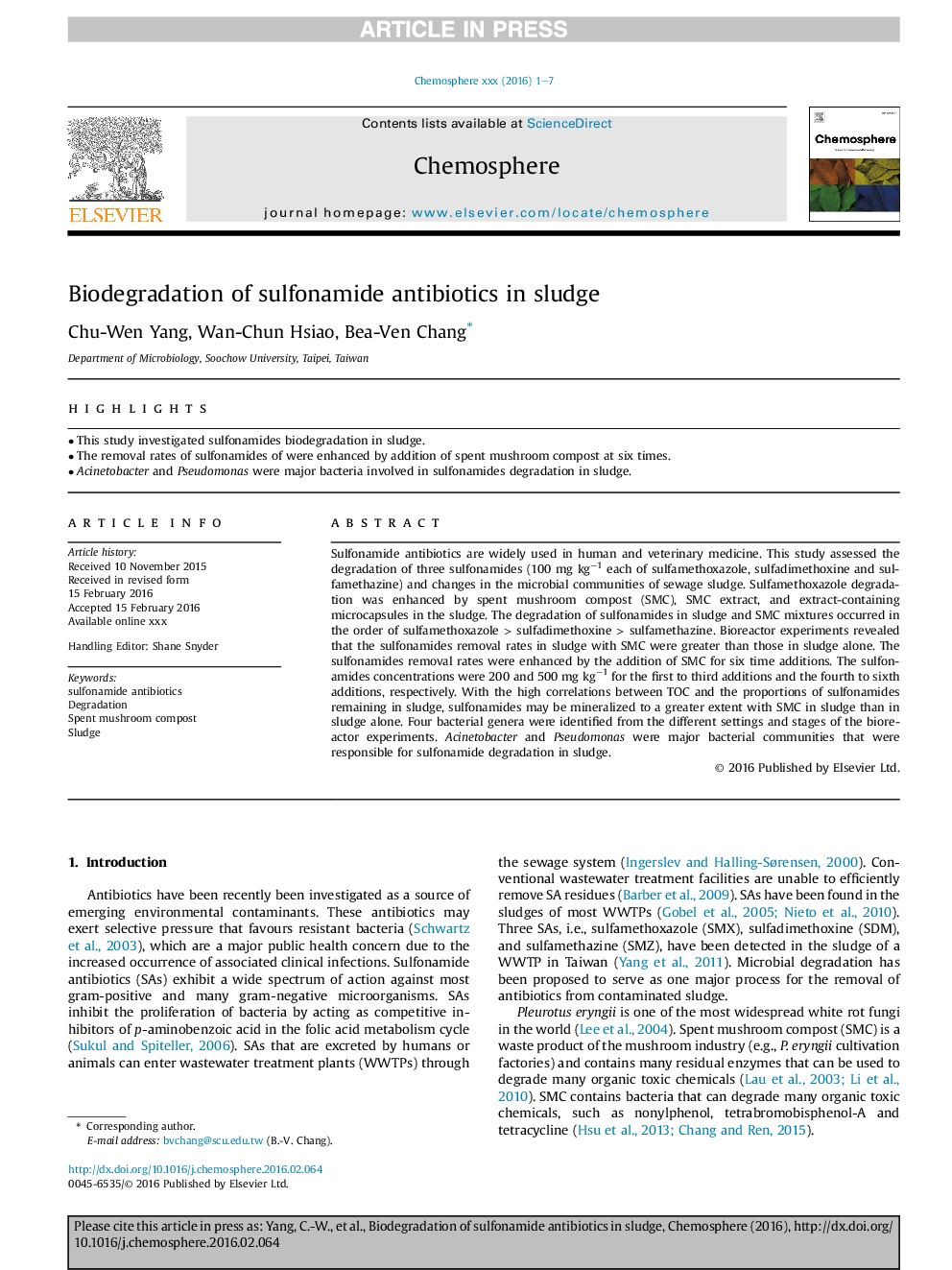| Article ID | Journal | Published Year | Pages | File Type |
|---|---|---|---|---|
| 6306842 | Chemosphere | 2016 | 7 Pages |
Abstract
Sulfonamide antibiotics are widely used in human and veterinary medicine. This study assessed the degradation of three sulfonamides (100 mg kgâ1 each of sulfamethoxazole, sulfadimethoxine and sulfamethazine) and changes in the microbial communities of sewage sludge. Sulfamethoxazole degradation was enhanced by spent mushroom compost (SMC), SMC extract, and extract-containing microcapsules in the sludge. The degradation of sulfonamides in sludge and SMC mixtures occurred in the order of sulfamethoxazole > sulfadimethoxine > sulfamethazine. Bioreactor experiments revealed that the sulfonamides removal rates in sludge with SMC were greater than those in sludge alone. The sulfonamides removal rates were enhanced by the addition of SMC for six time additions. The sulfonamides concentrations were 200 and 500 mg kgâ1 for the first to third additions and the fourth to sixth additions, respectively. With the high correlations between TOC and the proportions of sulfonamides remaining in sludge, sulfonamides may be mineralized to a greater extent with SMC in sludge than in sludge alone. Four bacterial genera were identified from the different settings and stages of the bioreactor experiments. Acinetobacter and Pseudomonas were major bacterial communities that were responsible for sulfonamide degradation in sludge.
Related Topics
Life Sciences
Environmental Science
Environmental Chemistry
Authors
Chu-Wen Yang, Wan-Chun Hsiao, Bea-Ven Chang,
